04 Nov 2014
The Danger Of Addiction Stigma
Addiction is one of the most stigmatized diseases there is. Stigma refers to a sense of disgrace or shame attached to an action, behavior or situation. Many people still view addiction as a choice or evidence of weak moral character, and therefore as something shameful. Even as research and scientific evidence point to the medical characteristics of addiction and the chemical brain changes that occur in addicts, we still stigmatize addiction. If you or someone you know has battled addiction you know how overwhelming that stigma can be. It can also be dangerous and it needs to be shattered.
Stigma Prevents Addicts From Getting Help
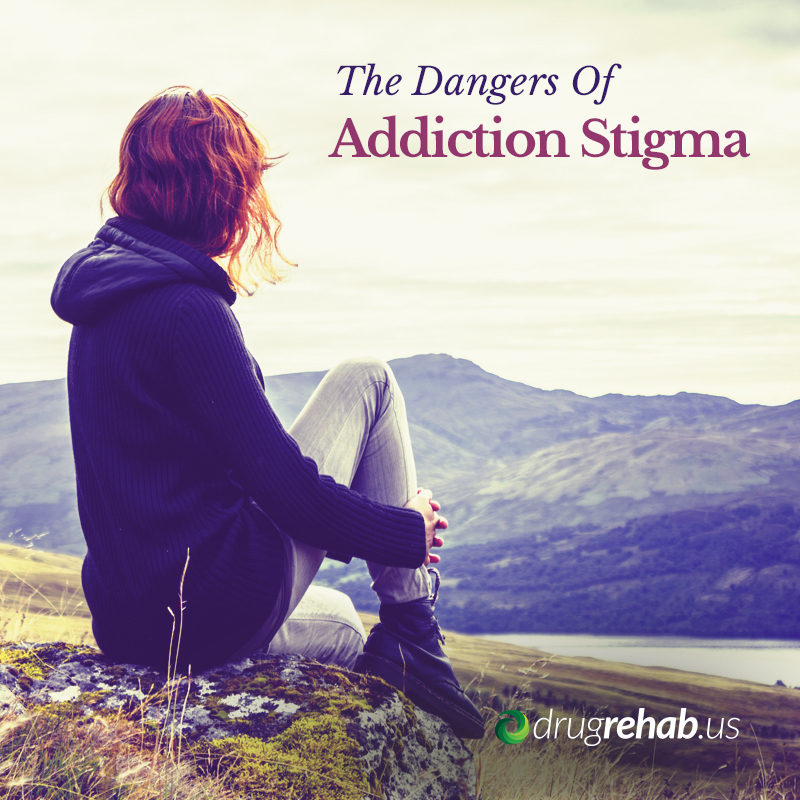 Perhaps one of the biggest dangers of stigma is that it keeps addicts from getting the professional help they so desperately need. When society at large views addiction as a moral failing rather than a medical illness, it makes sense that addicts would not want to admit to having a problem with substance abuse.
Perhaps one of the biggest dangers of stigma is that it keeps addicts from getting the professional help they so desperately need. When society at large views addiction as a moral failing rather than a medical illness, it makes sense that addicts would not want to admit to having a problem with substance abuse.
Why admit to something that would make everyone around you think less of you? It hurts to think of being treated that way, but it happens. And for this reason, many addicts deny their problem, hide their habit and refuse to get life-saving help, sometimes until it is too late.
Addiction Treatment Lags Behind Modern Medicine
Another danger of the stigma of addiction sits squarely in the world of medicine and the way in which the disease is treated. In spite of new research that shows the truth about addiction and which keeps growing in scope, treatment lags behind. We now know that addiction is a disease of the brain and should be treated as such. And yet, the majority of addicts in treatment are not getting care that is based on evidence and research. Just a small portion of addicts gets treatment that reflects what we know about addiction. Only when stigma shifts will treatment begin to change.
Addicts Are Going To Jail
The stigma of addiction is also entrenched in the justice system. Many addicts end up in jail for minor drug crimes, such as possession, when they really belong in treatment facilities. Most of the crimes committed by addicts are in the pursuit of drugs; in other words, their actions are a part of the disease. Sending an addict to jail for possession is almost akin to jailing someone with cavities for eating sugary foods or an obese person for having junk food. The latter two may sound ridiculous, but if we remove the stigma from addiction and view it as a disease, sending an addict to jail for having heroin would also sound outrageous.
Shattering Stigma
Stigma is dangerous. It prevents addicts from getting treatment, subjects addicts to sub-standard and ineffective treatment, and puts addicts in jail. If the incidence of addiction is to be reduced, we need to reduce stigma. If you or someone you know is an addict, it’s time to speak out and get help. We can work to end stigma by refusing to be quiet or complacent about addiction. Don’t deny the problem. Actively seek help and evidence-based treatment. Talk about your addiction and make sure people listen.
There is nothing shameful about having a disease and it’s time that everyone recognizes that fact. Stigma is killing addicts and that is the real shame when it comes to addiction. Change is coming, as evidenced by work of researchers and advocates for addicts, and it can’t come soon enough.
Time To Get Started And Take Action – Take That First Step To Addiction Recovery – Call Us Now!
15 Sep 2014
Am I Addicted To Caffeine?
Caffeine may be the most abused and most acceptable substance in America. Caffeine is a drug found in coffee, tea, energy drinks, sodas and chocolate. Many Americans need a fix first thing in the morning. If they don’t get it they feel groggy, foggy and irritable. Does this sound like you? If so, you may be a caffeine addict. It may not be as serious a condition as heroin addiction or alcoholism, but caffeine addiction has its own problems. Take a look at your habit and decide if you need to cut back.
What Is Caffeine?
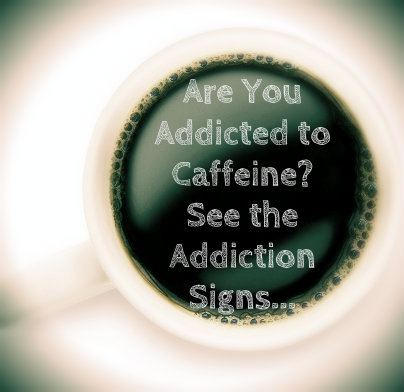 Caffeine is a natural substance, but it has no nutritional value. It is a stimulant that activates the brain and other parts of the nervous system. Most people use caffeine for its stimulant properties. You have that cup of coffee in the morning to help you wake up and maybe another one later in the day to get over afternoon drowsiness. While coffee may have some nutritional benefits, consuming too much caffeine through coffee or another source can be problematic.
Caffeine is a natural substance, but it has no nutritional value. It is a stimulant that activates the brain and other parts of the nervous system. Most people use caffeine for its stimulant properties. You have that cup of coffee in the morning to help you wake up and maybe another one later in the day to get over afternoon drowsiness. While coffee may have some nutritional benefits, consuming too much caffeine through coffee or another source can be problematic.
If you don’t get your fix you might experience withdrawal symptoms. These include drowsiness, nausea, irritability and headaches. Withdrawal is a classic sign of addiction. When you feel these uncomfortable symptoms, you take in more caffeine just to feel normal again. Experts debate whether or not you can really call this an addiction, as there are many differences between being hooked on caffeine and being hooked on harder drugs. A term that many experts will use instead of addiction is caffeine use disorder.
What Are The Signs Of Caffeine Addiction?
Withdrawal when you can’t get your caffeine fix is one sign of a caffeine use disorder, but it does not necessarily mean you have a serious problem. Another important sign of being addicted is being unable to stop using. If you want to cut back, but find you can’t, you may have a real problem with caffeine use. This is a sign of any addiction and it may mean that your caffeine habit is affecting you both physically and psychologically.
Doctors suggest that up to 400 milligrams per day is a safe amount of caffeine to consume. Another sign of addiction is if you are getting much more than this amount. Just having 500 to 600 milligrams a day can make you jittery, nervous, give you an upset stomach and elevate your heart rate. To give you an idea of how much you may be consuming each day, an eight-ounce cup of coffee contains between 95 and 200 milligrams of caffeine.
Kicking The Caffeine Habit
If you think you may be hooked, cut back on your caffeine intake before it takes over your life or harms your physical health. It’s so hard to stop drinking coffee because of those uncomfortable withdrawal symptoms. You may need to experience them to some degree in order to cut back, but it won’t last forever. Try reducing your intake a little bit every day. One way to do this and minimize the shock to your system is to replace one cup of coffee each day with a cup of tea. Tea has caffeine, but less than coffee. As you try to reduce your caffeine consumption, use healthy techniques to reduce stress, including exercise, meditation or yoga.
Caffeine is a real drug and one that can be habit forming. If you are taking a hard look at your habit, you might realize that it’s time to cut back. Start slow and reduce your intake over time. Replace your usual drink with tea or another beverage so that you still have the comfort of a warm cup. Before you know it, you will be free from your caffeine addiction.
05 Sep 2014
Discover When Partying Becomes Addiction
Partying can be a fun way to relax and unwind on the weekends and—when done without drugs and only moderate alcohol intake—a healthy way to combat stress. If, however, you are the type of partier who uses illicit drugs or who binge drinks, you could be heading down a dangerous road to addiction, serious health problems and even death. It may be time to question your partying habits and take a hard look at your actions. Are you partying responsibly and moderately? Or are you getting out of control?
When Does Partying Become Addiction?
 Partying may be as innocent as hanging out with friends at a house party with a couple of beers or going to a club for a few hours of dancing, but it can also mean using club drugs, drinking excessively, and making dangerous choices. You may even start partying and using what are considered to be non-addictive club drugs just once a week, but then find that you want to do it more and more. How do you know when you have crossed the line from a fun night out to going out of control and heading down the path to addiction?
Partying may be as innocent as hanging out with friends at a house party with a couple of beers or going to a club for a few hours of dancing, but it can also mean using club drugs, drinking excessively, and making dangerous choices. You may even start partying and using what are considered to be non-addictive club drugs just once a week, but then find that you want to do it more and more. How do you know when you have crossed the line from a fun night out to going out of control and heading down the path to addiction?
Here are some signs of addiction to watch for:
- You daydream about and crave the high you get when using a party drug or binge drinking. When you start to plan your party binges during the day and look forward to them more than once a week, you should be concerned.
- You develop a tolerance. In other words, you need more and more of a drug or alcohol to achieve the high and the euphoria that you crave.
- You start to use drugs or alcohol more often and in greater quantities. With tolerance comes the desire to use more. Be concerned if you start to increase the frequency of drug use or drinking in order to chase your high.
- You make poor decisions while under the influence. A serious aspect of problem drinking and drug abuse is engaging in risky behaviors that negatively impact your life. If you continue to use after getting sick from substance abuse, after missing work, or after getting into legal trouble, you have a problem.
Can You Turn Your Partying Around?
If you are beginning to question how much and how hard you party, you are in a good position to turn things around. Start cutting back right away. If it helps, do so in small steps. Eliminate one night of partying each week. On the nights that you do party, reduce your consumption of drugs or alcohol. Sometimes going cold turkey is not the most successful way to cut back.
Use your friends to help you stay focused on your mission to slow down. Tell everyone that you intend to cut back and ask for support. If any of your friends encourage you to party in spite of your declaration, they don’t have your best interests in mind and you need to let them go. For your nights off from partying, find sober friends to spend time with and engage in fun activities that don’t involve drinking or drugs.
If you try to cut back and find that you can’t do it, you may be further down the road than you thought and you may need professional help. Find an experienced substance abuse counselor or turn to a local support group for more resources. With professional help and the support of your friends and family, you can turn your life around before it is too late.
12 Aug 2014
Curb Your Shopping Addiction
Traditionally, the term addiction has been restricted to the description of dependence on a chemical substance, such as drugs or alcohol. Today we have a broader view of what addiction is and many experts recognize what they call behavioral, or process, addictions. Certain behaviors, like gambling, eating, or shopping, can become habitual in a similar way to drug abuse. If you feel you may be starting to cross a line when it comes to your shopping and spending, recognize your behaviors and learn how to curb them before you really get out of control.
Shopping As An Addiction
 There is nothing wrong with enjoying shopping. Even shopping as a regular hobby is not necessarily a bad thing. As with any behavior, though, you may cross the line into addictive territory. Some of the aspects of chemical addictions are similar to what people with a shopping addiction experience. For instance, engaging in a shopping spree may be associated with strong emotions. People who shop compulsively often continue to do so in the face of financial problems. They may let their habit interfere with relationships. These are all commonalities with drug and alcohol addiction.
There is nothing wrong with enjoying shopping. Even shopping as a regular hobby is not necessarily a bad thing. As with any behavior, though, you may cross the line into addictive territory. Some of the aspects of chemical addictions are similar to what people with a shopping addiction experience. For instance, engaging in a shopping spree may be associated with strong emotions. People who shop compulsively often continue to do so in the face of financial problems. They may let their habit interfere with relationships. These are all commonalities with drug and alcohol addiction.
How Do You Recognize A Shopping Addiction?
You have had a bad day at work. You got in a fight with your boyfriend or your husband. The kids are really getting on nerves. What do you do to relieve your stress and boost your mood? If your automatic answer is to go shopping or make a purchase, you might have a problem. Using a behavior, like shopping, to regularly boost your mood and regulate your emotions is a sign of an addictive habit.
Other signs that your shopping is becoming a real problem include buying in spite of financial woes. Compulsive shoppers keep going even when they have drained the bank account. They rack up huge credit card debt. Some even lose their homes because of their habits. Maybe you’re hooked on bargains. Do you buy a new pair of black heels that are half off, even though you have ten pairs in your closet? If so, you could have a problem. Is your shopping disrupting your relationships? Are you hiding your purchases from your partner because you know they will start a fight otherwise? These are all signs that you have a very bad habit.
How Can You Curb Your Shopping Addiction?
The good news is that you can take steps now to reverse your compulsive shopping. Unless you are in so deep that you really can’t stop, these actions will help.:
- To limit how much you spend, only use cash
- Cut up all your credit cards to avoid the temptation to build more debt
- Make a list before you go shopping and stick to it strictly
- Eliminate all impulse buys
- Stay offline if you are a compulsive Internet shopper
What is most important and oftentimes most difficult is figuring out why you shop. When you feel the urge, stop to think about what is driving you to go shopping. Are you stressed? Depressed or anxious? Is there a particular event that is making you feel bad? Face these things head on rather than drowning your emotions in a shopping binge. When you face what you’re feeling you can find better ways to cope. Instead of going shopping, go for a jog. Have a cup of tea and read a book. Take a hot bath or talk to a friend. Whatever you do, don’t give in to the urge to shop. If you still can’t control your urges, seek professional help.
Read On To Find Out If You Have A Food Addiction Or Other Behavioral Addiction
Some people take the time to weigh the potential costs and benefits of participating in a given activity before deciding what to do. Social scientists and researchers refer to this forward-thinking outlook as a future orientation or a future-oriented time perspective. In a study scheduled for publication in July 2014 in the journal Addictive Behaviors, researchers from Canada’s University of Waterloo sought to determine how a future orientation helps predict the likelihood that any given person will succeed in the attempt to quit smoking. These researchers concluded that a couple of key factors help explain the smoking cessation-related benefits of a future-oriented time perspective.
Nicotine Addiction And Smoking Cessation
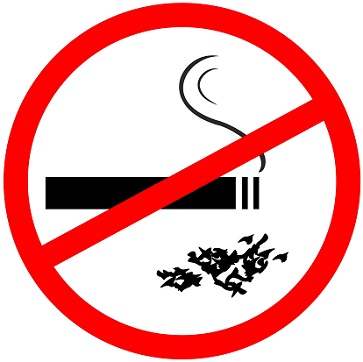 According to figures compiled by the Centers for Disease Control and Prevention, most of the people who smoke cigarettes in the U.S. are physically dependent on nicotine, the main active ingredient in all types of tobacco. Unfortunately, for a number of reasons, nicotine dependence/addiction is fairly easy to acquire and fairly hard to overcome. Doctors, addiction specialists and public health officials refer to the attempt to stop smoking cigarettes as smoking cessation. More than two-thirds of American cigarette smokers openly express a desire to stop smoking entirely and establish a long-term nicotine-free lifestyle. In line with this fact, millions of Americans make an effort at smoking cessation every year; however relatively few people successfully quit smoking for more than a few days or weeks.
According to figures compiled by the Centers for Disease Control and Prevention, most of the people who smoke cigarettes in the U.S. are physically dependent on nicotine, the main active ingredient in all types of tobacco. Unfortunately, for a number of reasons, nicotine dependence/addiction is fairly easy to acquire and fairly hard to overcome. Doctors, addiction specialists and public health officials refer to the attempt to stop smoking cigarettes as smoking cessation. More than two-thirds of American cigarette smokers openly express a desire to stop smoking entirely and establish a long-term nicotine-free lifestyle. In line with this fact, millions of Americans make an effort at smoking cessation every year; however relatively few people successfully quit smoking for more than a few days or weeks.
There are several scientifically proven methods to increase the odds of achieving and maintaining smoking abstinence, including nicotine replacement therapy, use of non-nicotine-based medications such as Chantix (varenicline) or Zyban (buproprion), and non-medication-based approaches such as in-person or remotely delivered behavioral therapy and informative sessions called brief interventions. However, most people in the U.S. who try to quit smoking do not rely on one of these well-tested options.
Time Perspective And Future Orientation
As a rule, most people primarily focus their thoughts and actions on events that happened in the past, events happening in the present or events that may occur in the future. The frame of reference in use determines any given individual’s time perspective. Two of the time perspectives have a particular bearing on substance use, abuse and addiction: a hedonistic view of the present and a future-oriented perspective that emphasizes the benefits of delayed gratification. Generally speaking, people who have a hedonistic perspective on the present value impulsive actions and short-term rewards over carefully considered actions and long-term rewards. Conversely, people who have a future-oriented perspective value carefully considered actions and long-term rewards over impulsive actions and short-term rewards.
Time Perspective’s Impact On Smoking Cessation Success
Doctors and researchers know that people with a future-oriented perspective commonly receive long-term benefits in the form of improved or well-maintained health. Smoking cessation success is one of these potential health benefits. In the study published in Addictive Behaviors, the University of Waterloo researchers used a large-scale survey of smokers living in Canada, the U.S., Great Britain and Australia to investigate exactly why future orientation has a positive influence on smoking cessation attempts. All told, this survey included information from 9,772 people; it covered topics that included the day-to-day time perspective of each participant, each participant’s level of personal motivation to quit smoking, the number of quit attempts over an eight-year period of time and the relative success of any quit attempts during the same time frame.
After analyzing the survey results, the researchers confirmed that cigarette users with a future-oriented time perspective successfully quit smoking more often than their counterparts who don’t have a future-oriented perspective. When they looked at the underlying reasons for the different outcomes in the two types of smokers, they found that the future-oriented individuals who successfully stopped smoking typically had a higher level of motivation during the cessation process and sustained their active participation in this process for longer amounts of time.
The authors of the study published in Addictive Behaviors note that their project is the first attempt to explore the link between future orientation and smoking cessation success in current or recent smokers located in more than one country. In addition, they note that the link between a future-oriented time perspective and success in smoking cessation was found in all four countries under consideration. The study’s authors believe that the two factors uncovered during the study—heightened motivation and sustained participation during quit attempts—may be the main explanatory factors for the positive outcomes in future-oriented smokers.
How Stimulant And Smoking Addictions Can Be Treated Together
Call Us Now To Break Free From Your Addictions!
16 Jul 2014
Is Addiction A Brain Disease?
The nature of addiction has been debated for decades. The prevailing current view is that addiction is not a choice; it’s a chronic illness that affects the brain. Some, however, even addiction experts, reject this categorization and insist that addiction is a rational choice. There are dangers on both sides. Defining addiction as a disease may give addicts a sense of hopelessness and lack of control. Blaming addicts for their choices, on the other hand, results in stigma and shame.
When coping with a loved one who is addicted, it is important to understand what the research really tells us. While there is still room for debate, the evidence is overwhelming that addicts have a chronic brain disease. By better understanding how drugs or alcohol have changed a loved one’s brain, you may be able to find the patience and compassion to help him.
Addiction Defined
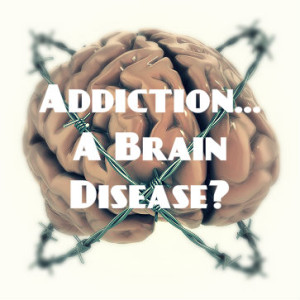 Modern research has uncovered some of the secrets of addiction. Those at the forefront of addiction expertise and treatment follow evidence-based practices and learn from medical research. With that in mind, the American Society of Addiction Medicine defines addiction as “a primary, chronic disease of brain reward, motivation, memory, and related circuitry.” In other words, to the best knowledge of those who study and treat addiction, addiction is a disease of the brain.
Modern research has uncovered some of the secrets of addiction. Those at the forefront of addiction expertise and treatment follow evidence-based practices and learn from medical research. With that in mind, the American Society of Addiction Medicine defines addiction as “a primary, chronic disease of brain reward, motivation, memory, and related circuitry.” In other words, to the best knowledge of those who study and treat addiction, addiction is a disease of the brain.
How Drugs Affect The Brain
If addiction is a disease of the brain, what exactly does that mean? It is easy to comprehend what a disease is. For instance, asthma is a disease that affects the respiratory system. Inflamed airways make it difficult to breathe. The right medications, avoiding triggers, and following a doctor’s orders all help asthma sufferers stay well and breathe with less difficulty.
Addiction is a disease that affects the brain. The initial use of drugs is a choice, but once in the bloodstream, drugs get into the brain and start to cause changes that impact mood and behavior. The first thing that happens when someone takes a drug is that cells in the brain release large quantities of a chemical called dopamine, which gives the user a sense of euphoria. That great feeling encourages subsequent and repeated drug use in order to recapture the euphoria.
Drugs also impact parts of the brain related to memory and self-control. Memories of taking a drug can make the user start to crave it again and again. The way in which drugs affect our control mechanisms in the brain mean that a user’s ability to resist cravings becomes severely impaired. These brain changes caused by drugs and alcohol clearly demonstrate that addiction is far more complex than making choices.
How Is Addiction Chronic?
As you cope with helping a loved one struggling to get into recovery, it is also important to understand the chronic nature of the disease. This means that there is no cure for the disease, only treatments. Like any other chronic illness, addiction is life-long. Relapses are not uncommon, but can be minimized by keeping up with treatments and establishing and maintaining a strong support system. In fact, research shows that rates of relapse among addicts are similar to those among people with other chronic diseases, like asthma.
Watching a loved one’s struggle with addiction is heartbreaking and frustrating. From the outside looking in, it can be difficult to understand why he doesn’t just stop using drugs. The more you understand his disease, that it impacts his brain and is chronic, the better able you will be to help him and to remain positive and patient with him as he gets treatment.
Read Our Other Posts For Friends And Family Of Addicts
People who experience serious problems with the non-addicted abuse of stimulant drugs (e.g., amphetamine, cocaine and methamphetamine) and people addicted to stimulant drugs typically qualify for a diagnosis called stimulant use disorder. After entering treatment for their problems, some individuals with this disorder successfully remain abstinent from stimulant use, while others relapse back into active stimulant intake.
In a study published in June 2014 in the journal Drug and Alcohol Dependence, researchers from a U.S. university and two private institutions compared the brain functions of people with stimulant use disorder who remain abstinent to the brain functions of people with the disorder who relapse.
Stimulant Use Disorder
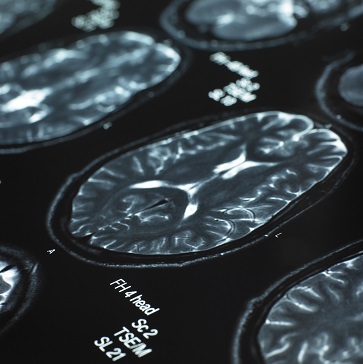 Stimulants are powerful substances that substantially speed up activity in the nerve cells that power the central nervous system (spinal cord and brain), and thereby trigger a speedup in key body functions such as the baseline heart rate and breathing rate. The brain changes associated with stimulant use include the onset of an intense sensation called euphoria, which emanates from a part of the brain commonly referred to as the pleasure center.
Stimulants are powerful substances that substantially speed up activity in the nerve cells that power the central nervous system (spinal cord and brain), and thereby trigger a speedup in key body functions such as the baseline heart rate and breathing rate. The brain changes associated with stimulant use include the onset of an intense sensation called euphoria, which emanates from a part of the brain commonly referred to as the pleasure center.
Some stimulant users become involved in a pattern of abuse when they try to recreate euphoric feelings in their pleasure centers, while others establish a pattern of abuse based on a misguided desire to do such things as increase alertness or improve academic performance.
Over time, habitual stimulant abusers may become stimulant addicts when their brains undergo long-term changes that produce physical dependence, as well recurring drug cravings, loss of control over stimulant intake or a number of other potential symptoms.
The stimulant use disorder diagnosis applies to non-addicted abusers who fall into a dysfunctional pattern of stimulant-related behavior, as well as to people affected by physical stimulant dependence and addiction. The American Psychiatric Association officially established this diagnosis in 2013 as a specific form of a larger illness classification called substance use disorder. Stimulant use disorder replaces independent diagnoses for both stimulant abuse and stimulant addiction. This replacement occurred because current evidence strongly supports a high degree of overlap for symptoms of abuse and addiction in affected stimulant users.
Stimulant Relapse
People in treatment for stimulant abuse/addiction need time to detoxify from active drug use and recover from the long-term changes in their normal brain function. A chief obstacle to this process is the continuing presence of strong urges to consume more of a given stimulant. Typically, these urges are intensified by cues in the everyday environment that recovering stimulant users have previously learned to associate with drug intake. Even in people who ultimately recover and establish a long-term abstinent lifestyle, the persistence of drug-using urges can trigger a relapse either during or after treatment. Relapses are a fairly common occurrence, and addiction specialists typically take them into account when devising treatment strategies for their patients/clients.
Are There Brain Differences In Those Who Relapse On Stimulants?
Researchers from the University of Minnesota, the Hazelden Foundation and a private psychiatric practice used modern imaging technology to compare the brain functions of people who relapse back into stimulant use during or after treatment to the brain functions of people who avoid stimulant use during or after treatment. All told, 18 people diagnosed with substance use disorder took part in the study, as did a second group of 15 people not affected by any form of substance abuse. The researchers performed two sets of brain scans on all of these individuals, and followed up half a year later to see which stimulant users had relapsed back into drug use.
With the advantage of hindsight, the researchers concluded that, at the initial bran scan, the participants who eventually relapsed had far more profound changes in the function of parts of the brain responsible for the critical tasks of maintaining emotional control and regulating levels of pleasure and reward. The participants who relapsed also gradually developed a reduced level of activity in these brain areas in the early stages of their recovery.
The study’s authors believe that the decline in brain function found in the participants who ultimately relapsed back into drug use may serve generally as a physical sign of heightened risks for relapse in recovering stimulant users.
Call Us Now If You Or A Loved One Is Struggling With Addiction Or Has Relapsed. Help Is Just A Phone Call Away!
20 Jun 2014
Do Genes Equal Destiny In Addiction?
We know that genes play a role in the development of addiction. No single gene determines whether a person will become addicted to drugs or alcohol because addiction is a complex and chronic disease. There are multiple genes that influence addiction, and environment plays a role as well. We know that genes are important because the number one risk factor for predicting addiction is family history. If you have a family history of addiction, you probably have some of the influencing genes. This does not mean that you are destined to become an alcoholic or a drug addict. It does mean, however, that you need to be aware and careful.
Addiction Is A Complex Disease
 Addiction is not a simple matter of one gene causing the disease. It is also not as simple as defining anyone with a family history of addiction as an addict or future addict. There are so many factors, both genetic and environmental, that influence addiction that it may never be possible to accurately predict if someone will develop an addiction. Because family history is such a strong risk factor, we can be sure that genetics play some role.
Addiction is not a simple matter of one gene causing the disease. It is also not as simple as defining anyone with a family history of addiction as an addict or future addict. There are so many factors, both genetic and environmental, that influence addiction that it may never be possible to accurately predict if someone will develop an addiction. Because family history is such a strong risk factor, we can be sure that genetics play some role.
Those without a family history of addiction may also develop addiction. This shows that environment plays a role as well. Experiencing childhood trauma, such as abuse, or having a mental illness can influence the development of addiction. Still, just because there is a family history of addiction or a personal experience of negative environmental factors does not mean you targeted or marked for life. You still have choices to make about abusing substances.
What If I Have A Family History of Addiction?
With a family history of addiction, you may be carrying some genes that could make you more susceptible to addiction. Remember, though, that drinking or using a drug for the first time is a choice you make. Once you have tried them, you may be more likely than the average person to become addicted, but you never have to take that first step. Genes do not push you to try illegal drugs or to get drunk.
If you are worried about becoming an addict, there are some important steps you can take:
- Abstain -The first and most important thing you can do is simply to abstain from drinking at all and from using illegal drugs. If you need to use prescription drugs that are habit-forming, follow your doctor’s instructions regarding dosing and talk to your doctor about addiction concerns.
- Seek counseling – If you have a family history of addiction, someone in your life likely caused you emotional distress, or worse, because of their addiction. Talking about it with a therapist can help you resolve any issues you have regarding this person and can help strengthen your determination to stay sober.
- Choose sober friends – If you have never struggled with addiction yourself you do not necessarily need to stay away from people who drink, but it can help to surround yourself with friends who also choose sobriety. When you spend too much time with people who are drinking or using drugs, they may try to pressure you to join in. You don’t need that extra pressure.
- Develop a healthy lifestyle – A great way to ensure that you don’t need to use drugs or alcohol is to live a life where there’s no room for substance abuse. Develop a strong social life with supportive friends and family. Engage in fulfilling and enjoyable hobbies and activities. Eat regular, well-balanced meals, exercise and stay healthy and you will have no need for substance abuse.
Always remember that genes for addiction are not destiny. You have the power to make choices in your life and to create the kind of life you want to have. By staying positive, surrounding yourself with supportive people and avoiding drugs and alcohol, you will be taking proactive steps that will make it less likely that family history will repeat itself.
Call Us Now If You Or A Loved One Is Struggling With Addiction – We Are Available 24/7!


